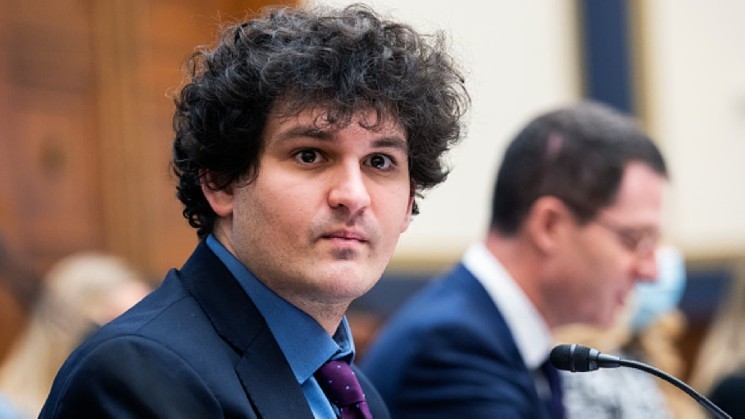The Controversial Resurrection of FTX: Sam Bankman-Fried Claims Exchange Was Never Truly Bankrupt
Former CEO Makes Startling Claims from Prison About Customer Funds and Asset Management
The cryptocurrency world was jolted today as Sam Bankman-Fried (SBF), the incarcerated founder and former CEO of FTX, made explosive claims that the exchange—which spectacularly collapsed in November 2022—was never actually insolvent. The statement comes as a shocking twist in what has been one of the most significant financial implosions in cryptocurrency history, an event that sent Bitcoin plummeting to $15,000 and shook investor confidence across digital asset markets worldwide.
In a surprising post from his X (formerly Twitter) account, Bankman-Fried alleged that the billions in customer funds believed to have vanished never actually disappeared from the platform. “The answer is simple. The money was never lost,” SBF declared in his statement. “Currently, 98% of approved FTX customer claims have been fully refunded, plus interest paid.” This assertion directly contradicts the widely accepted narrative that FTX’s collapse was triggered by misappropriated customer funds and financial mismanagement, claims that formed the basis of the fraud charges that currently have him behind bars.
The $8 Billion Question: Were Customer Funds Ever Actually Missing?
The central argument in SBF’s unexpected communication centers around approximately $8 billion in customer funds that prosecutors and bankruptcy administrators had previously suggested were improperly handled. According to the former crypto mogul, the exchange was merely experiencing a temporary liquidity crisis that was on the verge of resolution when external legal teams intervened and initiated bankruptcy proceedings. “Even when FTX was taken over by the bankruptcy legal team, there was enough money to return assets in kind to all customers,” Bankman-Fried maintained. He further claimed that “even now, if it weren’t for the legal team’s poor asset management, a full refund would be possible.”
These statements represent a dramatic reframing of the FTX collapse narrative. While regulatory authorities and court proceedings have painted a picture of deliberate fraud and financial misconduct, SBF is suggesting that the entire bankruptcy was unnecessary—perhaps even harmful—to customer interests. If true, his allegations would raise serious questions about the decision to push FTX into bankruptcy proceedings and the subsequent management of its assets by court-appointed administrators.
From $14 Billion to $136 Billion: The Explosive Growth of FTX’s Asset Portfolio
Perhaps the most remarkable aspect of Bankman-Fried’s claims involves the alleged current valuation of FTX’s asset portfolio. According to data shared by SBF, FTX held assets valued at approximately $14.6 billion in 2022 when the bankruptcy was initiated. However, he contends that today these same assets have ballooned to an astonishing $136 billion—nearly a tenfold increase that would more than cover all creditor claims if properly managed and distributed.
The breakdown of these assets, as presented by SBF, includes substantial holdings in both traditional financial investments and cryptocurrencies. Most notably, he claims the exchange currently holds $14.3 billion worth of stock in AI company Anthropic and $7.6 billion in Robinhood shares. On the cryptocurrency front, the portfolio reportedly includes approximately $12.4 billion in Solana (SOL), $2.3 billion in Bitcoin (BTC), and $2.9 billion in Sui (SUI), alongside smaller positions in Ethereum, XRP, and FTX’s native token FTT. If accurate, these figures suggest that the dramatic appreciation of crypto assets since the 2022 market bottom—particularly Solana, which has seen tremendous growth—has substantially increased the value of FTX’s holdings.
Legal Implications and Market Response to SBF’s Controversial Claims
Bankman-Fried’s statements arrive at a complex moment in his legal journey and in the broader cryptocurrency regulatory landscape. Currently serving time after being convicted of fraud, his ability to make public statements—especially ones that could potentially influence market sentiment or bankruptcy proceedings—raises eyebrows among legal experts. The timing and platform of these claims have prompted questions about their veracity and the potential motivations behind them.
The cryptocurrency market, which has largely recovered since FTX’s collapse, has shown measured response to these revelations. While SBF’s statements touch on several major cryptocurrencies that FTX allegedly still holds in significant quantities, traders appear to be approaching the information with caution. The claims directly challenge the official bankruptcy narratives that have been established through court proceedings, regulatory investigations, and testimonies from other FTX executives. Financial analysts note that if bankruptcy administrators have indeed mismanaged assets of this magnitude, it would represent one of the most consequential failures in bankruptcy administration history.
The Ongoing Legacy of FTX’s Collapse and Potential Paths Forward
The FTX bankruptcy has become a watershed moment in cryptocurrency history, prompting increased regulatory scrutiny, reformed risk management practices across exchanges, and heightened awareness of counterparty risks among investors. Bankman-Fried’s latest assertions, whether ultimately proven true or false, add another complex chapter to an already convoluted story that continues to impact how digital assets are perceived and regulated globally.
If even partially accurate, SBF’s claims could potentially influence ongoing bankruptcy proceedings and asset distribution strategies. Creditors and former FTX customers, many of whom have been waiting for nearly two years to recover their funds, will undoubtedly be following these developments closely. The bankruptcy administrators and current FTX management will likely need to address these allegations and provide transparency regarding the current valuation and management of the exchange’s remaining assets.
As this situation continues to unfold, it underscores the continuing volatility and unpredictability of the cryptocurrency ecosystem. The potential resurrection of FTX’s value from the ashes of its collapse represents both the extreme risk and extraordinary potential that continue to characterize digital asset investments. While SBF’s claims must be viewed through the lens of his current legal situation, they raise profound questions about transparency, asset management, and the procedures followed when major cryptocurrency entities face financial difficulties.
This article does not constitute investment advice. All information provided is for educational and informational purposes only.


